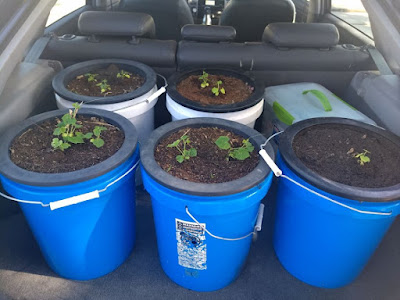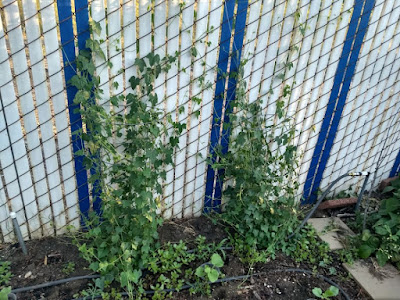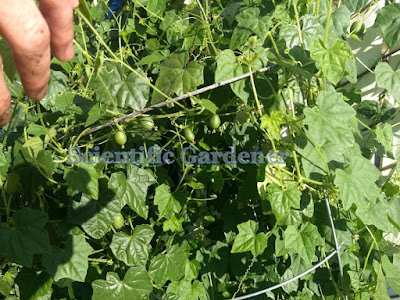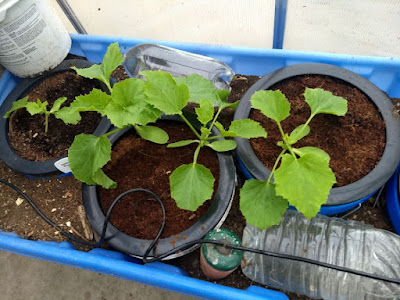Friday, May 6, 2022
Fertile Garden Cucamelons
Friday, April 29, 2022
Some Considerations to Make before Container Gardening
While containers can be a fantastic option for those who cannot grow in the ground, they do present a number of challenges. For me, two of the biggest concerns with containers are container volume (how much the container can hold) and a lack of insulation (how much the container is effected by variations in daily temperature fluctuations). The larger a container can hold, the larger the plant’s roots can grow. Likewise, there is a incredible amount of damage that can happen to the roots of plants in containers during the summer.
Even if growing in white buckets, the temperature of the soil just inside the plastic in a 5-gallon-bucket by the end of a summer day can be much hotter than the outdoor temperature. Temperatures more akin to solarization will damage the roots of most any vegetable plant. This occurs because the container is exposed to both direct sunlight and radiant heat from outside of the container. While there are ways to mitigate this concern (insulating a container and growing in a larger container) know that the first several inches around most non-insulated containers can be designated a “dead zone” and that, as the spring turns into summer, the “dead zone” will only increase until the plant is so stressed that it will no longer support fruit growth.
Am I against growing in containers? Not at all! I do it. But if the vegetable grower does not take into considerations the risks and disadvantages of doing so and understands the limitations that container growing presents, then – with proper thought and planning – a small crop of whatever can be grown in containers. Would growing in a 5-gallon-bucket work for a giant pumpkin? No. Nor would it work well for an indeterminate tomato variety. Would it work for growing something for 2-3 months. Yes it would – if you take the above issues into consideration.
For further reading:
Here is a blog post about me growing in hydroponic baskets in 5-gallon-buckets.
And some of my experience doing so in the greenhouse.
And outside of the greenhouse.
Though not perfect, this article talks about the consequences of heat stress on plants and what some possible solutions to heat stress may be.
Friday, April 22, 2022
Planting in 10 inch Hydroponic Baskets
One of the things I greatly enjoy about gardening is that it provides endless opportunities for learning. Though the gardener may grow a variety of vegetable in the garden one year, changing a couple factors the following year can dramatically change the outcome of the crop. A particular issue that many gardeners experience is limited space in the garden bed to grow their crop. While some choose to remedy this problem by growing in containers, container growing can be especially challenging in areas with intense sunlight or heat. Unless the gardener has the resources to obtain a very large container or one that is somehow insulated from the worst aspects of the climate, direct sun hits the sides of the container and, when combined with heat, can damage roots or dry soil to the point at which the plants suffer, dither and their health in general deteriorates.






















































